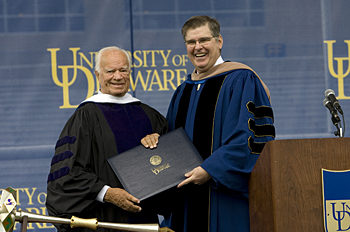Wide-ranging scholar, trained first as an artist, then as an historian of medieval European art, you literally taught your way into your true field by having to learn about American Art in order to teach a course in it. From the beginning, you saw the importance of not only cataloguing and preserving, but of investigating and analyzing, and the extraordinary fruit of that early research, your 1968 book, Sculpture in America, remains the definitive work in the field. Few scholars can claim to have written the bible in their fields; you have written two. Your textbook American Art: History and Culture is the classroom standard, acclaimed by scholars and general readers alike for the imaginative breadth of its approach and the clarity of its text. Your recent study, Stanford White: Decorator in Opulence and Dealer in Antiquities, has been widely praised for its many insights into White and his context, but also for the wry sense of humor with which you tell the story.
Fluent and graceful teacher, honored by this University with the Henry Francis du Pont Winterthur Chair in Art History, the Francis Alison Faculty Award, and the Excellence in Teaching Award, you have brought honor to the University by serving as coordinator of the Winterthur Program in Early American Culture, chair of the Delaware State Arts Council, and editor and consultant to journals and institutions ranging from American Art Journal to the National Portrait Gallery and the Boston Museum of Fine Arts.
Great-hearted mentor, you have spoken often of the inspiration you have found in teaching, explaining that “The art is beautiful, but it can't tell us what it's about...(s)o what the art historian does...is explain what was important in that society--politically and religiously--...and what the artist himself was really interested in.” Because of your remarkable ability to ask and explore these questions, several generations of world-class scholars, teachers, museum directors and curators can trace their academic lineage straight to you. Having been called to be a keeper and transmitter of our American heritage, you have yourself become part of that heritage.
American gentleman and American scholar, you said when reflecting about teaching your first class, “With American art, I felt so much more. I was dealing with the heart of my own people....” Because you have so splendidly shared that wealth of feeling through your teaching and writing, we thank you and we salute you.
May 31, 2008
Photo by Kathy F. Atkinson



